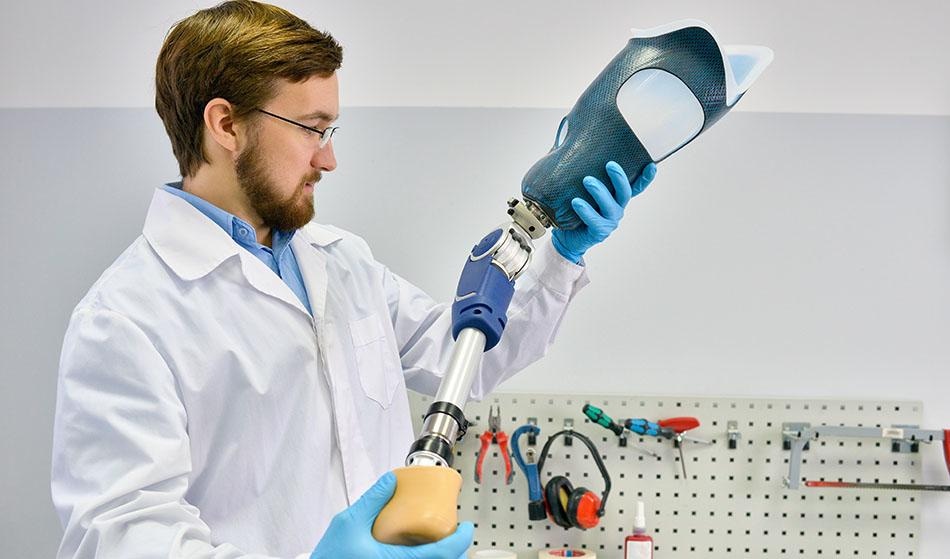
SeventyFour / Shutterstock
Gone are the days of cumbersome, drab prosthetics; today’s prosthetics are functional, fit perfectly and are created using 3D printing technology.
In 2011, Ivan Owen revolutionized prosthetics when he posted a video of a functional metal puppet hand he had designed for a steampunk convention online. To cut a long story short, this eventually led to the first 3D printed mechanical hand for a five-year-old South African boy.
But rather than patent his “clunky, chunky Frankenhand” design, Owen posted the files openly in the hope that others would pick up his design and refine it, and that is exactly what happened.
e-NABLE
From his initial design and ensuing discussions, the e-NABLE community was created. The network of 7,000 volunteers in dozens of countries have access to thousands of 3D printers and print prosthetics for those who need them.
e-NABLE only print hands and arms, often for children who are likely to need their limb upgrading every few years. As the cost of printers has reduced, so too has the cost of a 3D printed limb - around $50 compared with $5,000 to $50,000 for a traditional prosthetic. In addition, the futuristic, robotic design and range of colors appeal to children with lost limbs who say it helps their self-expression.
3D Printed Prosthetics
As well as a reduction in cost, 3D printed prosthetics can be created within a matter of hours rather than weeks or months for a traditionally-made prosthetic. A 3D scanner creates a digital image in around 30 minutes which can be sent via email and printed layer by layer. 3D printing offers the prosthetist a means of increasing their productivity, creating better, faster and more easily repeatable limbs.
Hands and arms are the most commonly 3D printed limbs, and Open Bionics are creating the next generation of prosthetic limbs for trans-radial amputees (those who still have an elbow joint but are missing anything below this) where all mechanical parts are also 3D printed. Their designs are functional, aesthetically pleasing and boast comfort for the wearer both physically and socially.
A 3D scan of the wearer’s residual limb is placed in 3D modelling software before a hand and socket is printed. It is created using both rigid and flexible materials to support the different functionalities of different parts of the hand. For example, the fingers are printed from a single piece of flexible thermoplastic polyurethane, while the rigid parts of the hand are printed with polylactic acid filament.
Functionality is given to the limb via sensors in the prosthetic socket which are placed on the wearer’s muscles. When the wearer intentionally engages specific muscles in their residual limb, the sensors send electrical signals to a controller that translate the data into commands for electric motors to move the joint. The strength and speed of movements is controlled by varying the muscle intensity, and each finger can be moved independently allowing different gripping modes and movements to be made.
Fewer lower limbs are created using 3D printing technology because the materials used do not yet match the long-term durability of traditionally-made prosthetics – although this is likely to change in the future. However, a lightweight hollow exoskeleton leg matched to a reversed laser scan of the remaining limb shows that it is possible. William Root’s Exo-Prosthetic Leg is functional and aesthetically pleasing, as well as being customizable.
Conclusion
3D printed prosthetics is still a young field and many of the limbs developed are still prototypes. What started as a DIY movement to help people create their own affordable hands is now influencing the way professionals are making prosthetics. It is also ushering in a new era of designer prosthetics that allow the wearer to have interchangeable limbs with different styles and colors.
References and further reading
Disclaimer: The views expressed here are those of the author expressed in their private capacity and do not necessarily represent the views of AZoM.com Limited T/A AZoNetwork the owner and operator of this website. This disclaimer forms part of the Terms and conditions of use of this website.